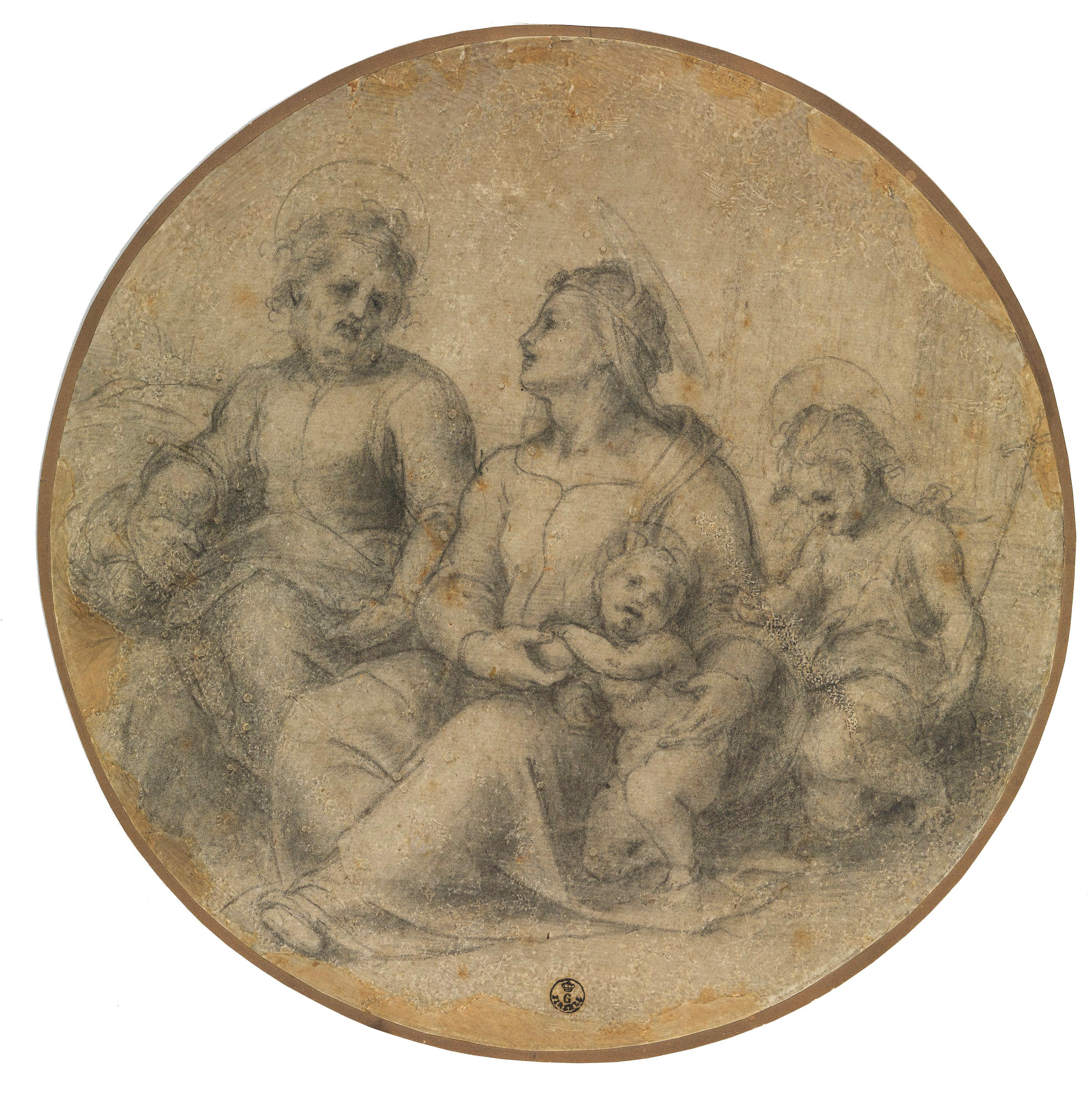Madonna on the ground with Child, Saint Joseph and young Saint John
Andrea d'Agnolo, detto Andrea del Sarto (Firenze 1486 - 1531)
On the verso, in pencil, in nineteenth/twentieth-century handwriting: "638 del Sarto [erased] Franciabigio"; on the verso, in pencil, in nineteenth/twentieth-century handwriting: "638 già corn. 158"
The sixteenth-century date attributed to this drawing by Andrea del Sarto, first rejected by Bernard Berenson in the early twentieth century, is now universally accepted by critics. In terms of style, the study is comparable to the artist’s works in the 1510s, such as ‘Noli me tangere’ (1509-1510) painted for the Augustinian convent of San Gallo in Florence (Uffizi Galleries, Gallery of the Statues and Paintings, inv. 1890 no. 516). Both the painting and the sketch resonate with the artist’s development of anatomical forms and his interest in the Leonardesque sfumato. However, while the delicate application of the black chalk, particularly visible in the chiaroscuro contrasts, is reminiscent of Leonardo’s style, the subject shares a close compositional dialogue with Raphael’s works. The completeness of the scene and the circular format suggest that the drawing was a study for a painting. Although there are no known works that directly correspond to the overall piece, Andrea del Sarto replicates his depiction of the Madonna and Baby Jesus almost entirely in his ‘Madonna of the Humility’ (Uffizi Galleries, Palatine Gallery, inv. OdA 1911 no. 1154), painted between 1513 and 1514. As regards the time gap between the drawing, dated before 1511, and the painting, a plausible explanation is that the sketch was retained by the artist with the intention of using it as a model for a later work.
